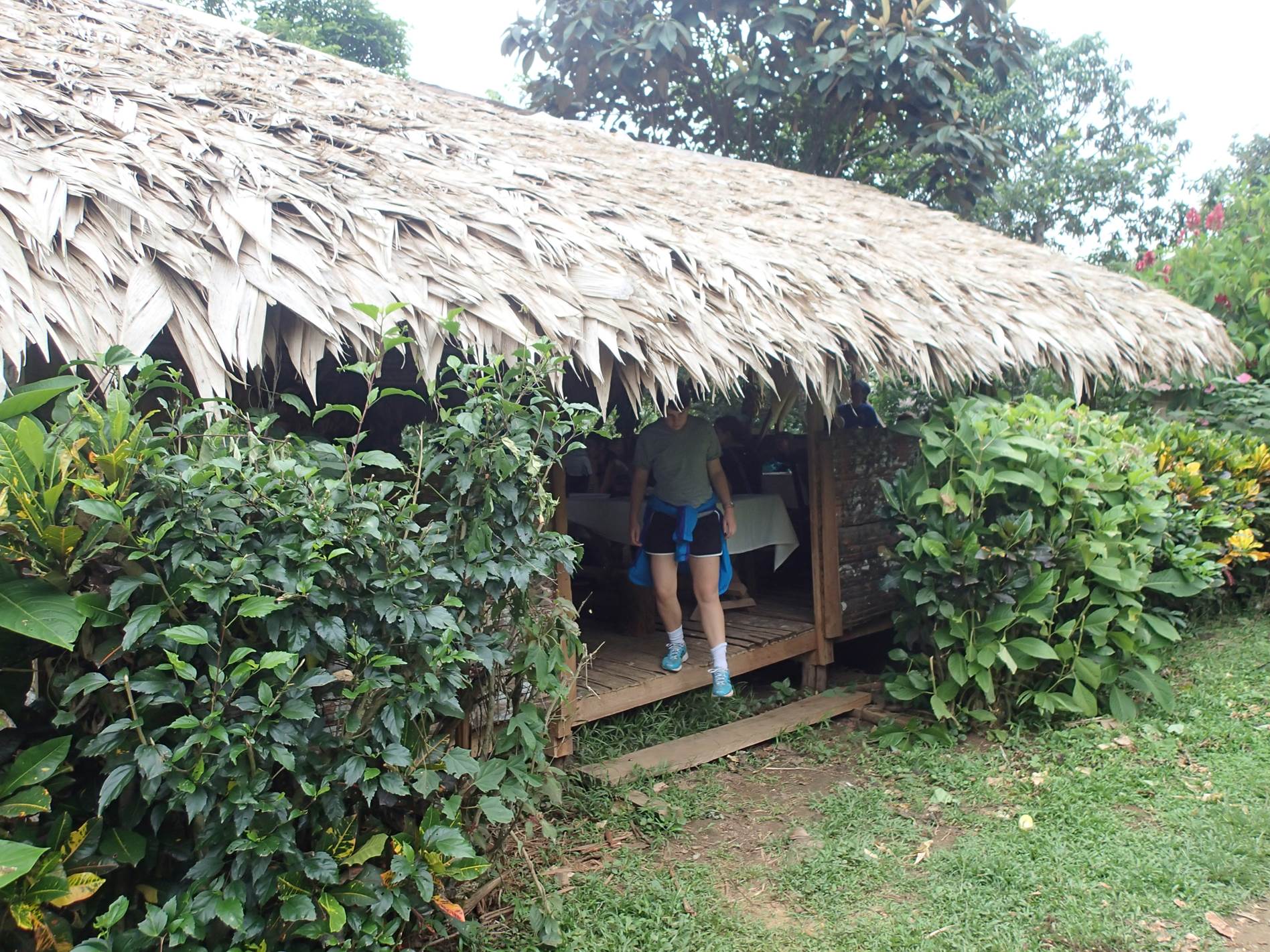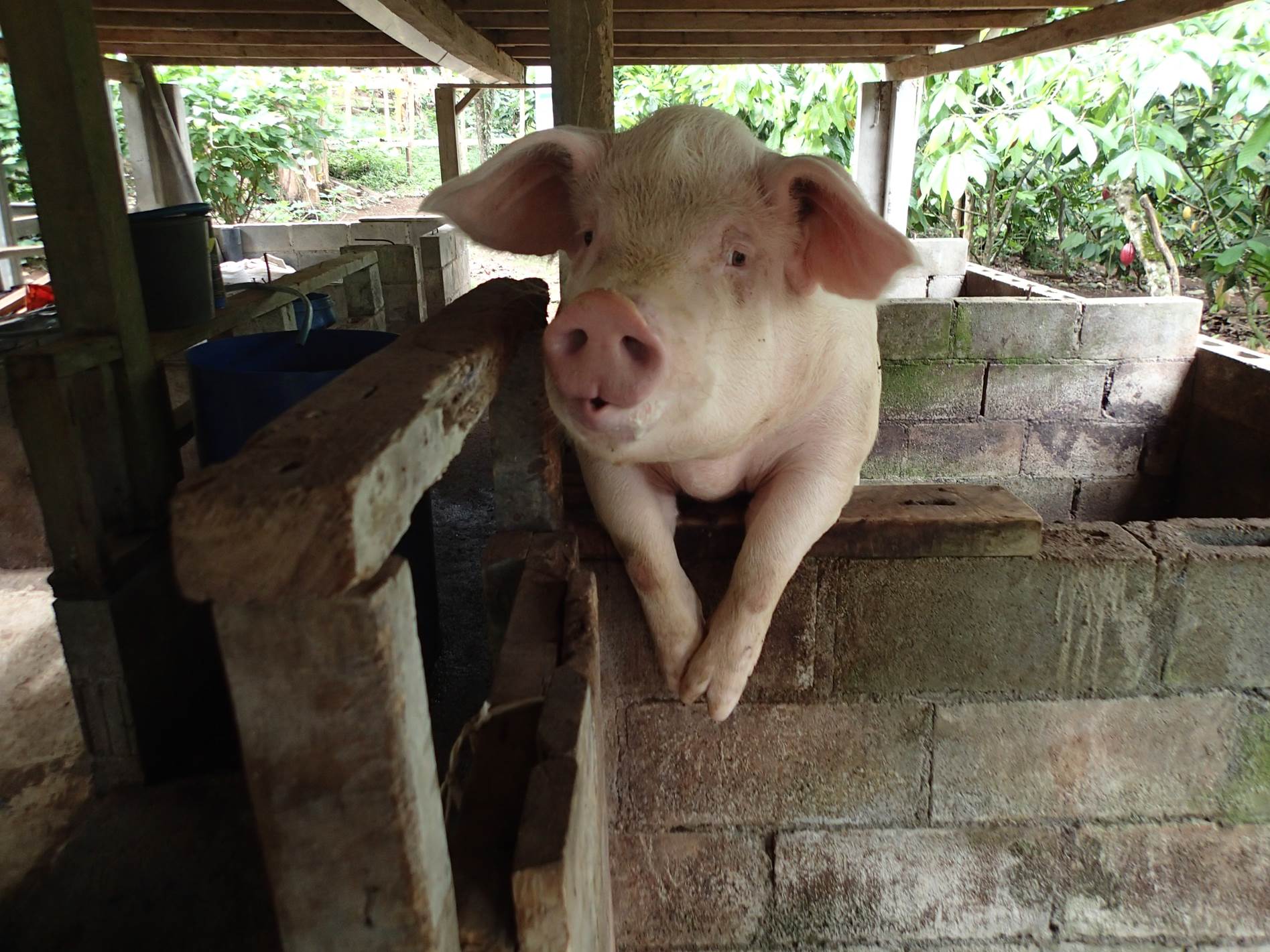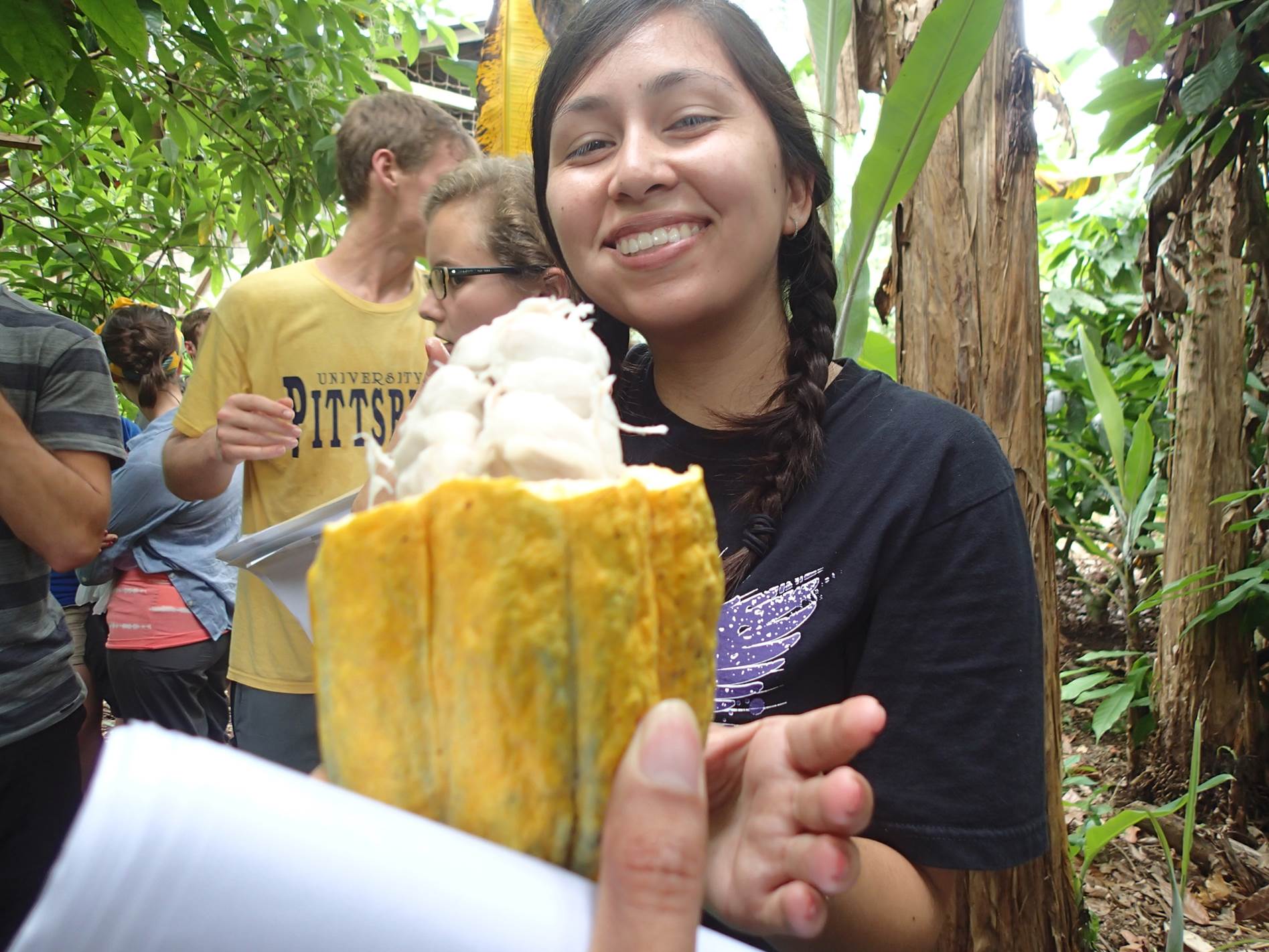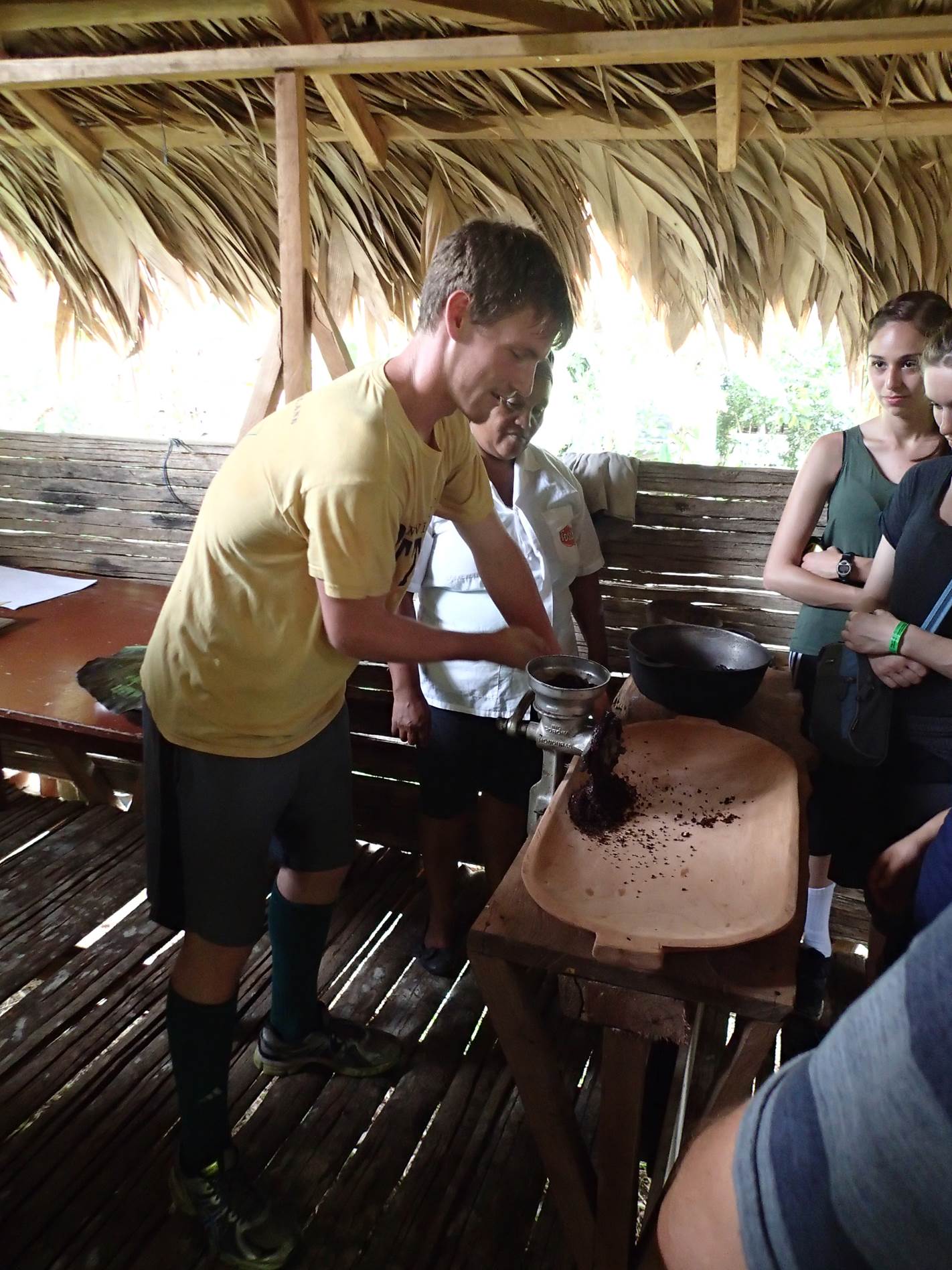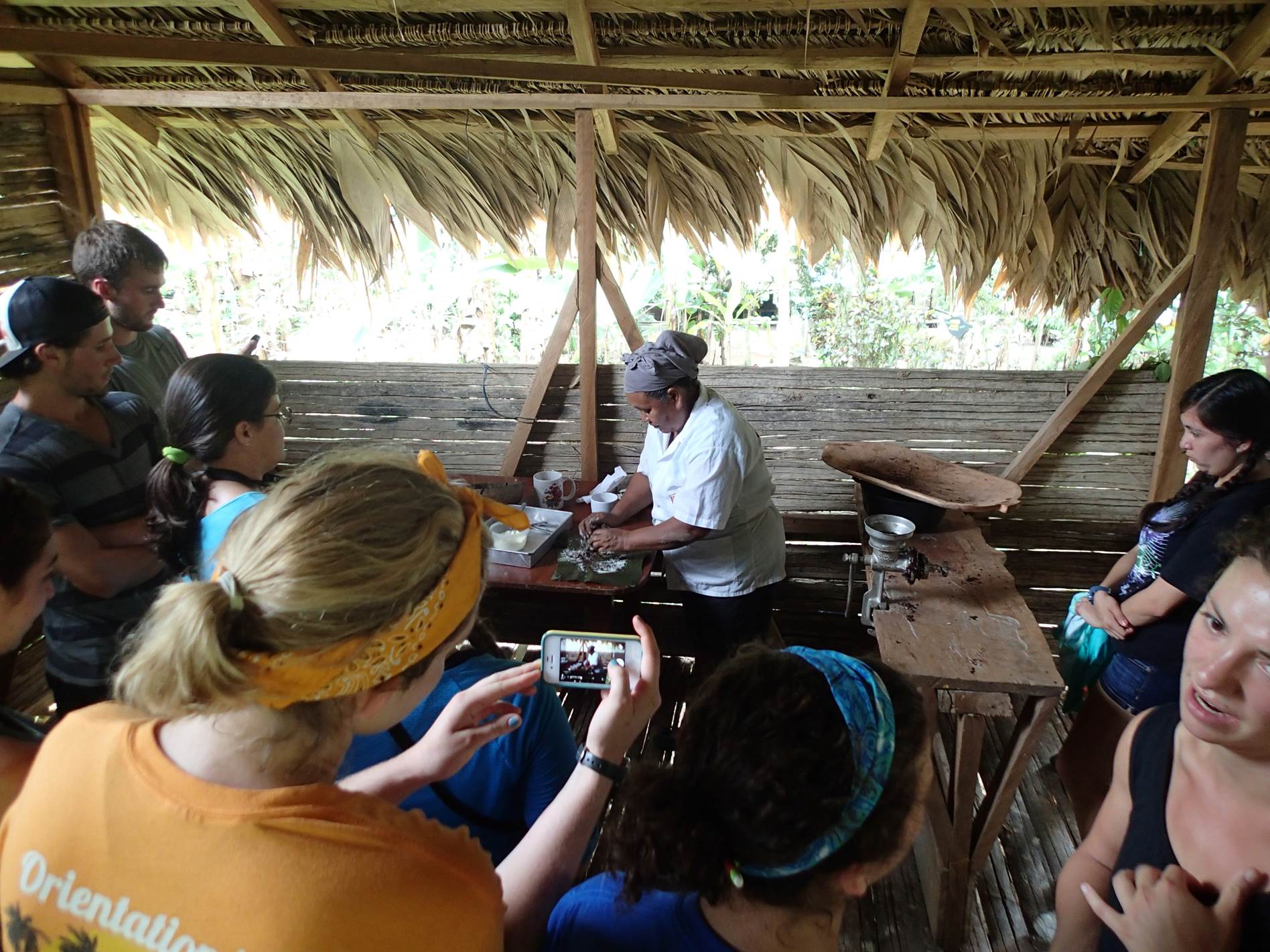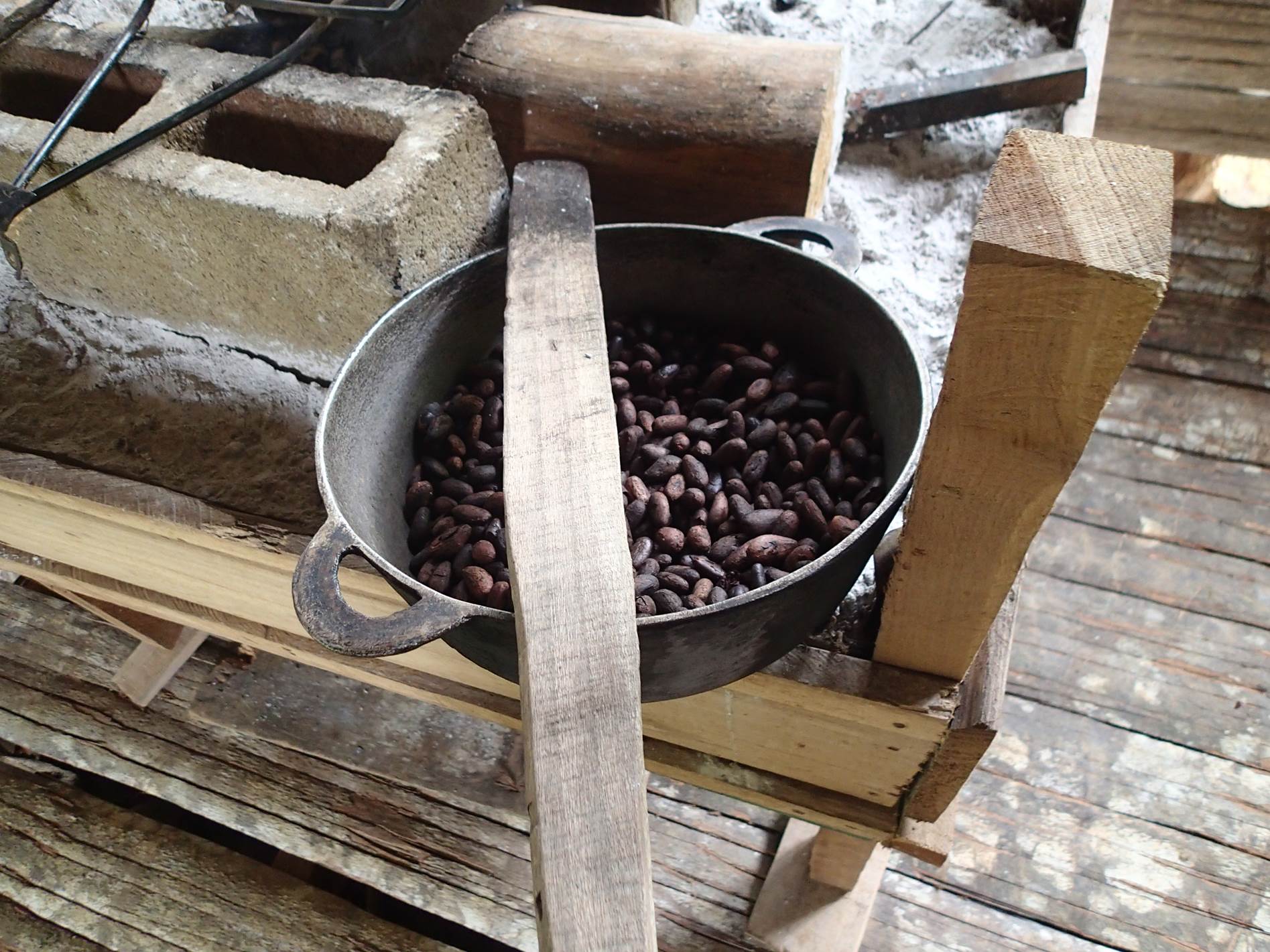
Our time at Pacuare came to an end with a nice farewell breakfast consisting of eggs, plantains, rice and beans. We left the reserve at 8 am aboard the same two water taxis’ (small water boats). We traveled from a water front home with the cool ocean breeze to a traditional indigenous style home in the lowland mountains. We traveled south along the coast then eastward into the Talamanca province to reach the BriBri indigenous reserve. Our first stop within the reserve was at La Finca Integral, a small farm dedicated to cultivating diverse crops using traditional BriBri customs. Everything from the buildings to the animal feed is gathered from natural resources within the mountains. Nothing goes to waste on the farm.
La Finca Integral was by far the most sustainable farm I have ever been to. The outdoor dining was built using traditional BriBri construction methods. The building was made using two different wood types for the foundation and frame, while palm leaves were dried and used for roofing. We started our afternoon with a scrumptious homemade meal with a side of freshly made Guanabana juice. Once our stomachs were happy, we were given a tour of the farm. On our brief tour we learned how they harvest their crops and take care of their livestock. On the farm they have three pigs (two only a few months old and one massive five year old used for breeding)
and a large coup of chickens. We then learned about the six different varieties of cacao trees cultivated for the production of chocolate.Our tour guide Marcos, cut cacao pods from each of the different trees, cracked the pod on a rock on the floor andpassed it around for everyone to try (Briana is happy with her cacao pod). The taste of the cacao seeds was nothing as I would have imagined. The seed not only provides us with delicious chocolate we all know and love, but they also tingle your taste buds. Within the cacao pods the seeds are covered in a white slimy gelatin substance which can either be sweet or sour. From what I could taste, the different varieties of cacao determined the taste of the gelatin substance. I now have a greater appreciation for the cacao tree.We ended our tour of the farm back at the dining area where Maruja, a local indigenous women, taught us the traditional method used to make chocolate. First the seeds are gathered and washed, to clean off the white gelatin. The seeds are then left to dry in direct sunlight for a day. Not all seeds make it through the drying process but those that do are then toasted in a metal bowl over an open flame for three to four minutes. The seeds indicate when they are ready once they start popping like popcorn. These first few steps were completed prior to our arrival. We entered the process as
the cacao seeds were taken out of the flame to cool off, but only for a few seconds, and then crushed. Once the seeds were grounded to a desired size, Maruja extracted the skin from the entire batch by shaking and suspending the grounded cacao off the wooden plate and having it gracefully land back on the plate. Maruja then placed the seeds in a metal grinder where she then ground the cacao seeds into a rich thick paste. Before completing the process she, Maruja let each of the students have a turn with the grinder (Bagel is testing his skills with the metal grinder). I had a bit of the fresh rich chocolate paste and talk about 100% pure chocolate, it was so bitter (and I thought 70% was
strong). Maruja then added powdered milk and sugar to the batch. She even made a batch without milk for our dear companions that are lactose intolerant, this way everyone was able to enjoy the chocolate greatness. Prior to our departure they also brought out slices of banana bread and juice to future satisfy our sweet tooth. Needless to say we were all really happy leaving La Finca Integral.-Diana Ortiz

